
Sovetskaya racketa
Zdraviya zhelay comrade! Yes, dats a Bi-1!

The Bereznyak-Isayev BI-1 was a Soviet short-range rocket-powered interceptor developed during the Second World War.
Early design
Soviet research and development of rocket-powered aircraft began with Sergey Korolev's GIRD-6 project in 1932. His interest in stratospheric flight was also shared by Marshal Mikhail Tukhachevsky who supported this early work. After a long series of unmanned tests of vehicles, Korolev's RP-318-1 rocket aircraft flew on 28 Feb 1940. That Spring, TsAGI (???? – ??????´????? ???????????????´?????? ???????´? – Tsentralniy Aerogidrodinamicheskiy Institut Central Aerohydrodynamic Institute) hosted a conference for aircraft chief designers on the subject of ramjet and rocket propulsion. On 12 July the Council of People's Commissars called for the development of a high-speed stratospheric aircraft.
Aircraft designer and head of OKB-293, Viktor Fedorovich Bolkhovitinov attended the TsAGI conference along with two of his top engineers, A. Ya. Bereznyak and A. M. Isaev. The young Bereznyak had made an impression in 1938 with a high-speed airplane design that some thought could break the world speed record. Bereznyak and Isaev were excited by the idea of designing a rocket-powered aircraft, and their "patron" Bolkhovitinov approved. By the autumn of 1940, they were able to show fellow engineer Boris Chertok a preliminary design of "Project G". The design, made up mostly from plywood and duralumin had a take-off weight of 1,500 kg (3,300 lb), and they planned to use the new 13.734 kN (3,088 lbf) rocket engine under development in the RNII (Raketnyy Nauchno-Issledovatel'skiy Institut – reaction engine scientific research institute). Chertok was astounded that the aircraft could almost climb vertically.
Bereznyak, Isaev and Chertok visited RNII in March 1941, but the new rocket engine was not working yet. The engine was designed by Leonid Dushkin, who had made the RD-A-150 for the Korolyov RP-318-1. Powered by tractor kerosene and red fuming nitric acid, it fell short of the hoped for 13.74 kN (3,090 lbf) thrust and the D-1-A-1100 was expected to reach 10.8 kN (2,400 lbf). The "A" stood for Nitric Acid ("Azotnokislotny" in Russian), versus K for Liquid Oxygen ("Kislorodny" in Russian), a distinction of unusual importance and controversy among Soviet rocket scientists. Dushkin's turbine propellant pump was causing considerable problems, driven by hot gas and steam from a small combustion chamber fed with rocket propellants mixed with water, but this system was perfected a few years later for the RD-2M engine.
The D-1-A-1100 was built from S54 steel (a 12% chromium alloy). At this point in time, Russian rocket engines were built with typical aviation piston-engine manufacturing technology, weighing 48 kg (106 lb), it could be broken down into discrete forged-steel sections – a conical head with 60 centrifugal injectors, the cylindrical chamber, and the nozzle – joined with bolts and copper gaskets. It was ignited with a nichrome glow plug, later replaced with silicon-carbide and was cooled regeneratively by both propellants, the chamber walls by a spiral flow of incoming fuel (kerosene) and the nozzle section by the flow of oxidizer (Nitric Acid).

Ag1 - Canopy
VTOL Down - Flaps








1st - livery based on this image:

Credits: Free3D website
2nd - maybe in some ways its can be inaccurate
3rd - me frogor, but its 100% was be something abou canopy


Specifications
Spotlights
- RicardoACE one month ago
- Rjenteissussy one month ago
- MrCOPTY one month ago
General Characteristics
- Created On Windows
- Wingspan 30.1ft (9.2m)
- Length 32.9ft (10.0m)
- Height 12.7ft (3.9m)
- Empty Weight 1,018lbs (462kg)
- Loaded Weight 2,559lbs (1,160kg)
Performance
- Power/Weight Ratio 2.107
- Wing Loading 13.6lbs/ft2 (66.4kg/m2)
- Wing Area 188.0ft2 (17.5m2)
- Drag Points 878
Parts
- Number of Parts 204
- Control Surfaces 7
- Performance Cost 934

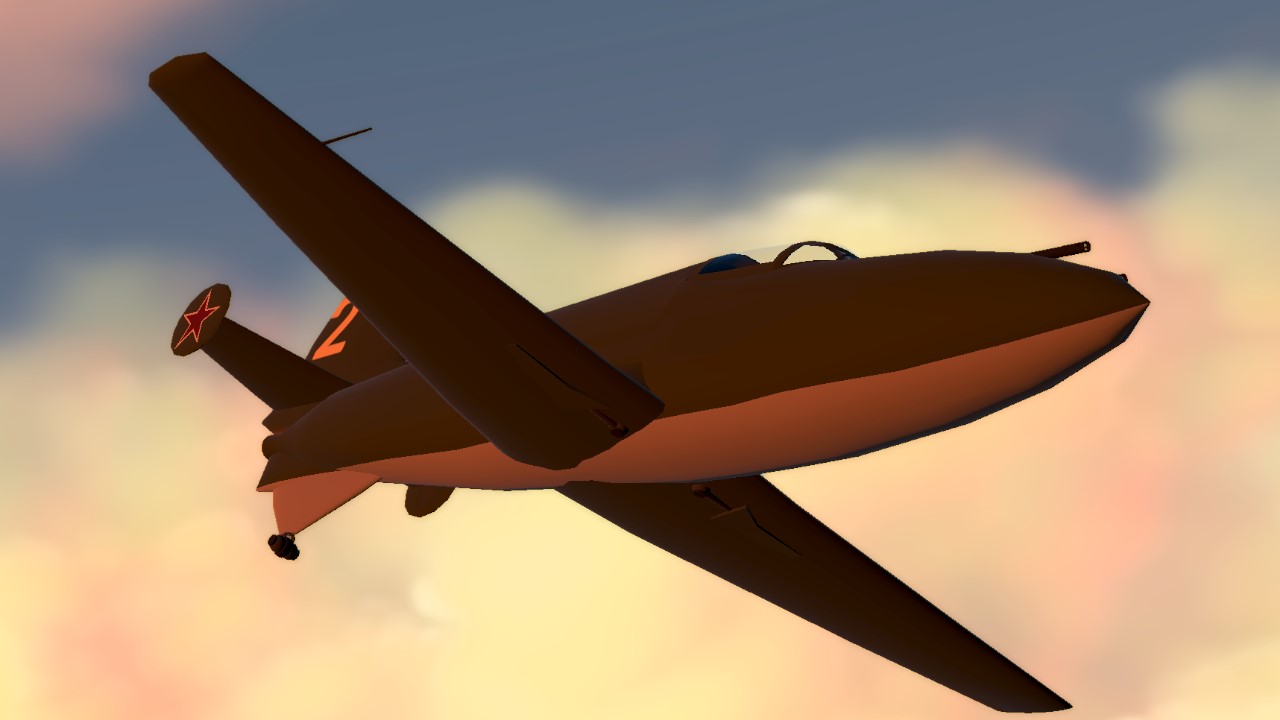
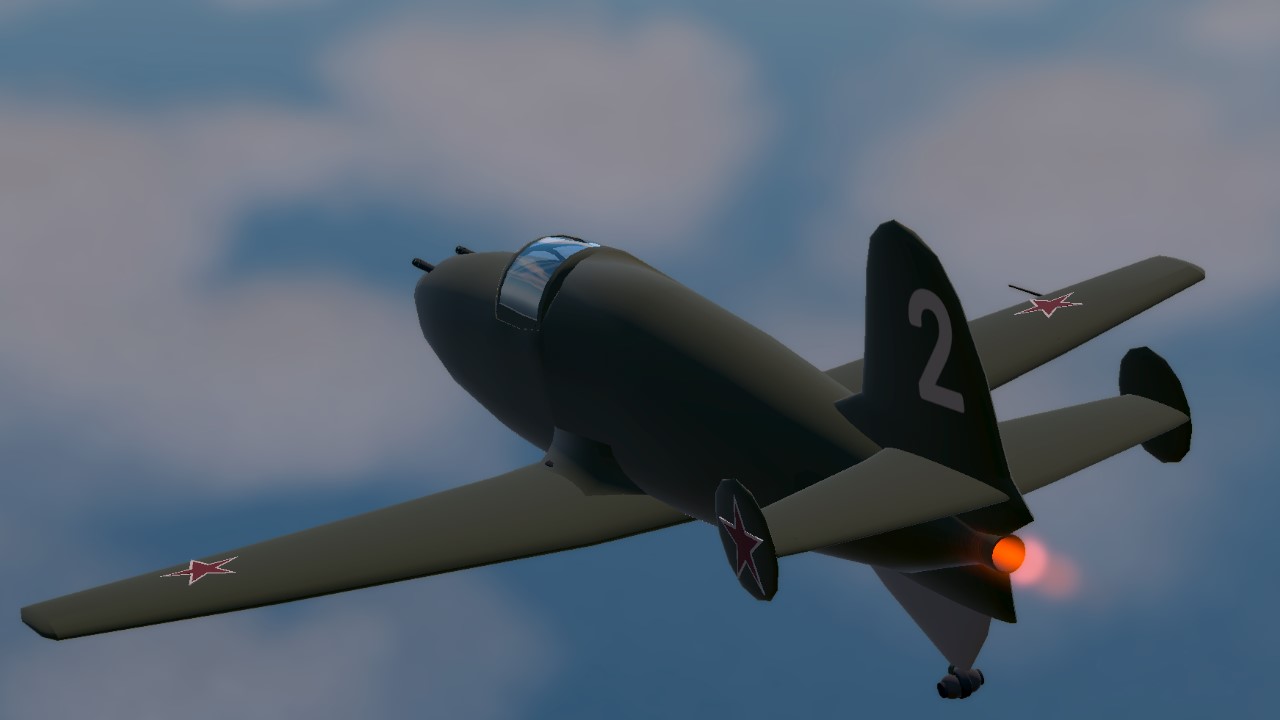
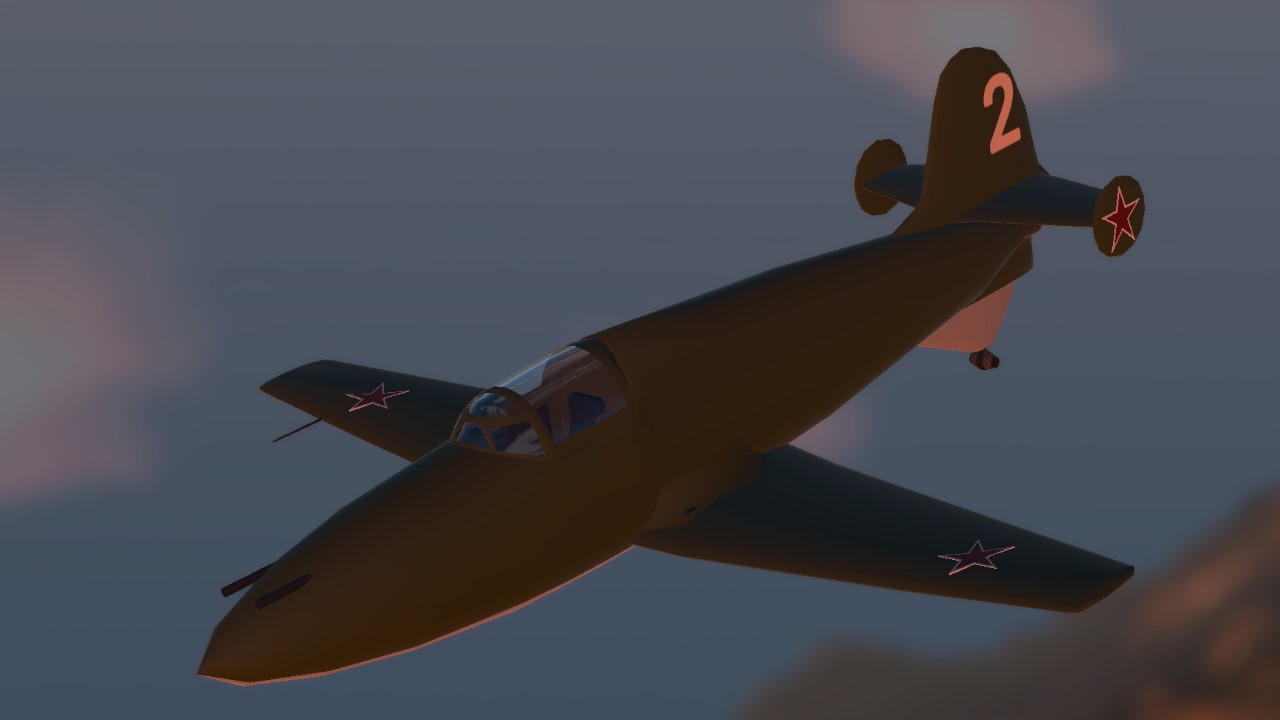
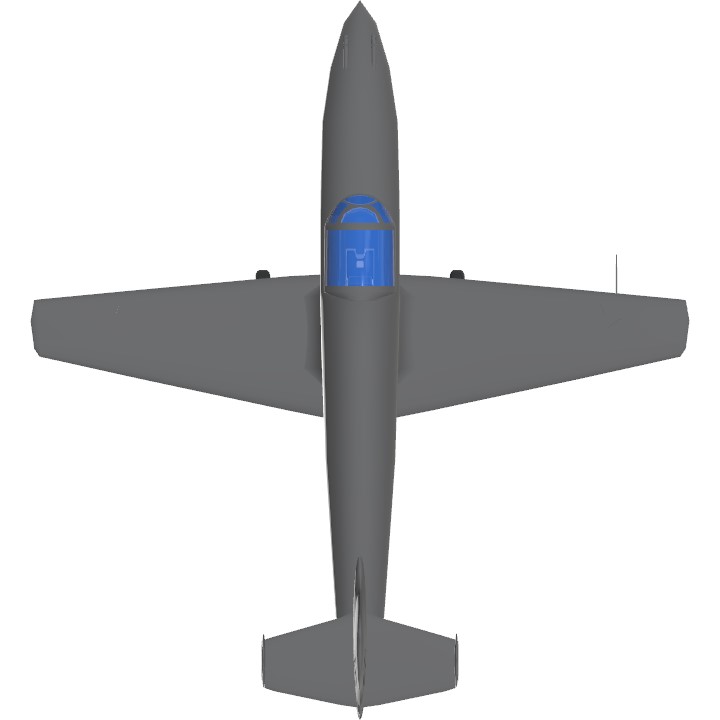
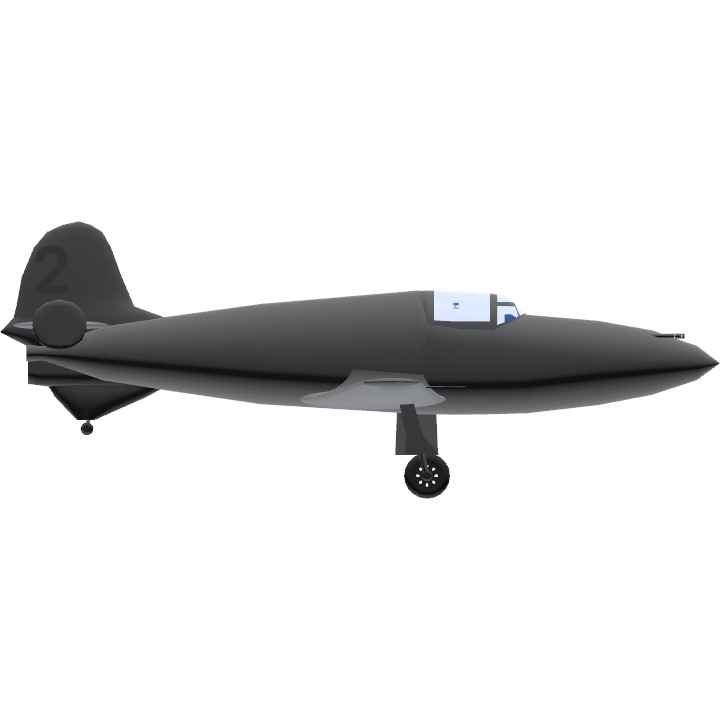
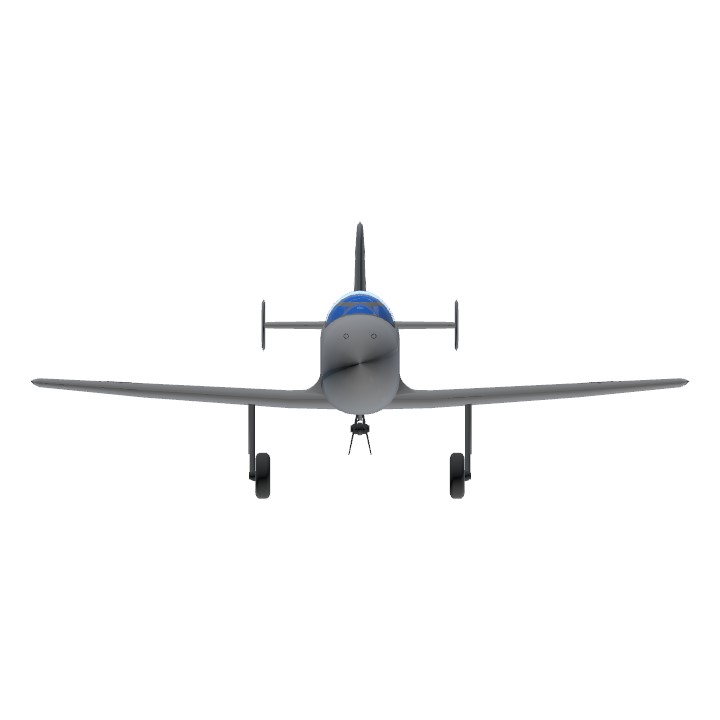
Me frogor to mention
@ALRX
Tanks for you stars!
For being auto tagged
> click here <
Sovetsko-racketnie tags:
@Boeing727200F
@TheGliderGuy
@MrCOPTY
@CrestelAeronautics
@HungrySu34
@YarisHatchback
@TheMouse
@TheUltimatePlaneLover
@TheNewSPplayer
@MIGFOXHOUND31BSM26
@SuperSuperTheSylph
@ChihiroFujisaki
Pe-8 parasite…
looks like a Russian me 163 Komet
cool tho, take an upvote
One way ticket
@CrestelAeronautics wild, me even didnt know abou dat plane lol
@Erc90F4RU
You just described a VX-23
@CrestelAeronautics Its flying wing/canard/f-22 fuselage type💀
@Erc90F4RU
High-tier player’s worst nightmare:
Brings a whole new meaning to Biplane
Also fun fact
First time I heard about Bi-1 from game called Il-2 sturmovik 1946, very beloved game for me
@AndiTontrando for rel? Dam....
Me really want see military plane irl
I' ve seen this aircraft at Koltsovo airport, and it was used as a monument there:)
🅱️ I
Yo homie this is 🥶🥶🥶🧊 and did not even leave any blankets, this goes hard.
@Erc90F4RU aint no way they're the same??
dang
@IFVuser no gonna lie
me would build Me-163 but...
nothing can scare me but this
Me-163 flight model and F-22 fuselage type
its scares me...
ah it looks like a counterpart of the Me-163 Komet
but soviet version
@Rjenteissussy uh oh.......
If I wasn't wrong
I Got @SimplPleyns flashbacks